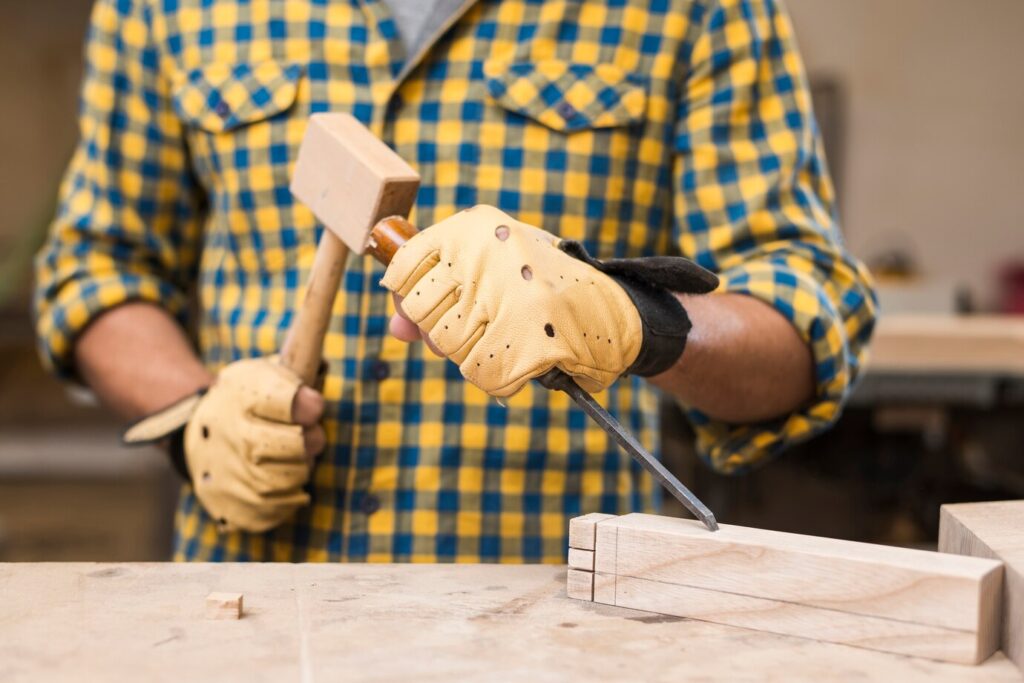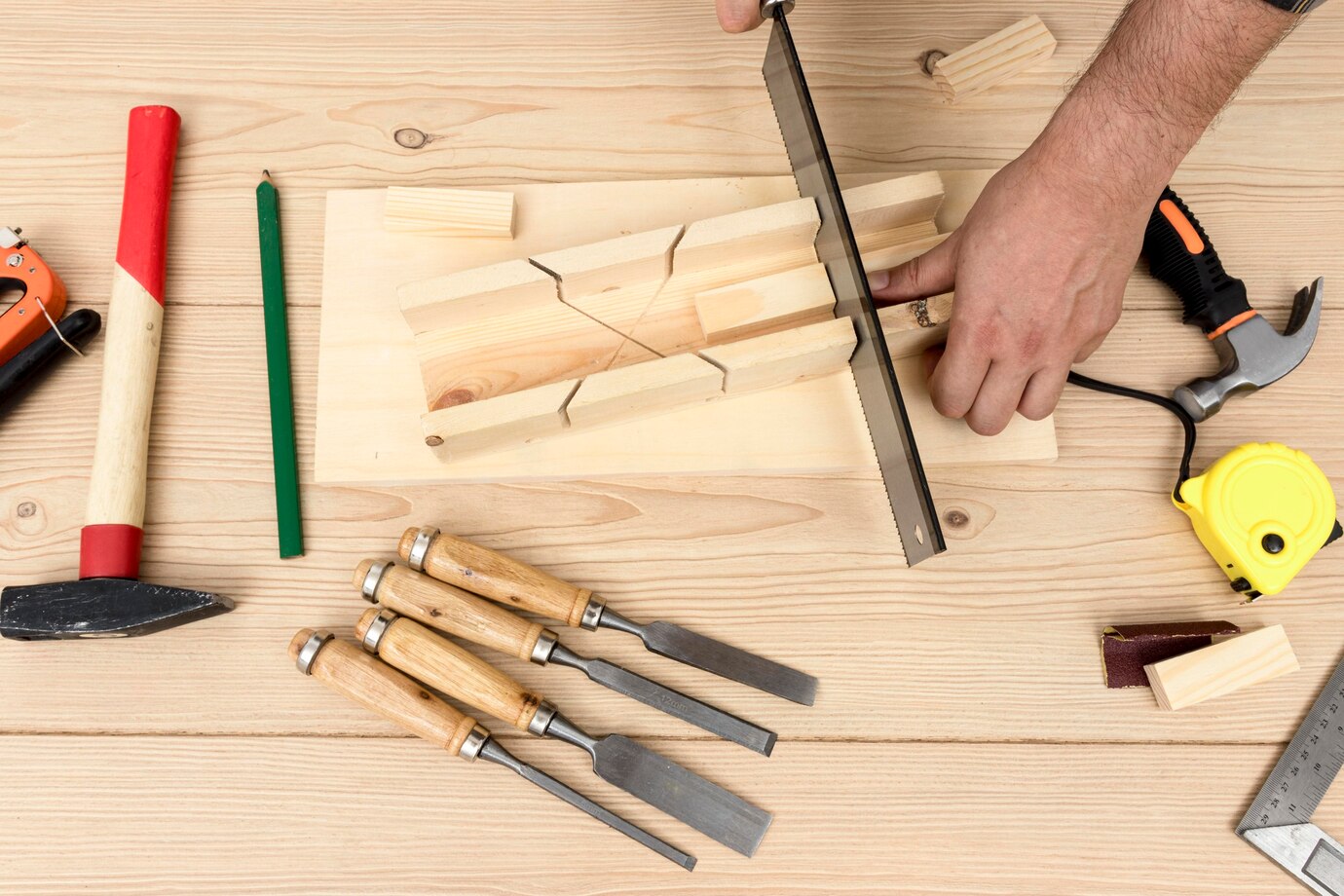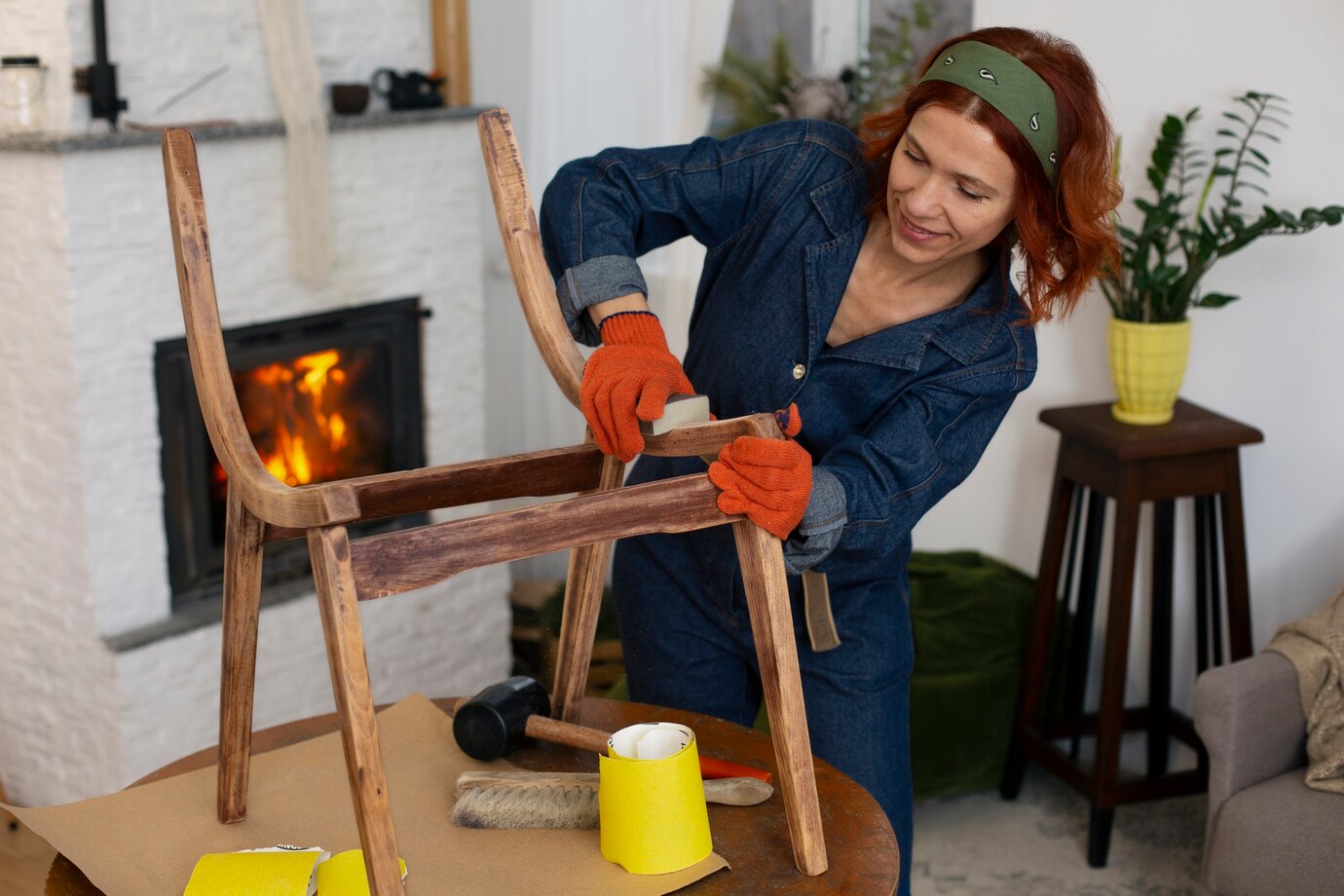The DIY & Crafts Blog

Best Woodworking Clamps and When to Use Them
Woodworking clamps are the unsung heroes of DIY projects and carpentry. They hold wood pieces steady, offering precision, stability, and safety in every task. Whether you’re glueing, assembling, or carving, the right clamp is a game-changer.
In this ultimate guide, we’ll untangle the vast world of woodworking clamps. Discover various clamp types, master their effective use, and find the best options for your projects. In the end, you’ll have the skills to boost your woodworking and unlock your toolbox’s full potential.
Why Are Clamps Important in Woodworking?

Clamps are essential in woodworking. They help you get better results in your projects.
1. Ensures Precision
Keeping pieces aligned during assembly is very important. This is true, especially for projects needing precise joinery. Even a small movement can cause misaligned joints and weak structures without clamps.
2. Enhances Safety
Clamps keep pieces in place. This lowers the chance of injury during cutting, drilling, or chiselling. This is particularly important when working with power tools.
3. Improves Bonding Strength
When glueing pieces together, pressure is needed to ensure a strong bond. Clamps apply uniform pressure, ensuring that the adhesive distributes evenly and that joints are solid.
4. Increases Efficiency
Holding wood pieces by hand is inefficient and can lead to inaccuracies. Clamps free up your hands so you can focus on precision cutting, drilling, or assembling your project.
Types of Woodworking Clamps and Their Uses
Knowing the types of clamps and their uses will help you choose the right tool for your woodworking projects.
1. Bar Clamps (F-Clamps)
What Are They?
Bar clamps, also known as F-clamps, feature a long metal bar with a sliding jaw and a fixed jaw. They are commonly used for holding large workpieces together.
Best Uses
- Large projects, such as furniture making and cabinet assembly.
- Glue-ups that require consistent pressure over a large surface area.
- Projects that involve joining thick wooden boards.
Pros and Cons
Pros:
- Strong grip and durable construction.
- Adjustable length to accommodate different project sizes.
- Provides even pressure distribution.
Cons:
- Can be heavy and bulky.
- They are more expensive than smaller clamps.
2. Pipe Clamps
What Are They?
Pipe clamps consist of a set of clamp fixtures attached to a pipe, allowing for customisable length depending on the size of your project.
Best Uses
- Wide panel glue-ups.
- Heavy-duty woodworking, such as making doors or large furniture pieces.
- When extra-long reach is needed beyond standard bar clamps.
Pros and Cons
Pros:
- Customisable length using different pipe sizes.
- Strong clamping force.
- Ideal for large-scale projects.
Cons:
- Requires separate pipe purchase.
- Heavier than other clamps.
3. Parallel Clamps
What Are They?
Parallel clamps have jaws that remain perfectly parallel, making them excellent for tasks that require even pressure without causing warping.
Best Uses
- Precision work, such as cabinetry and fine woodworking.
- Edge glue-ups where maintaining parallelism is critical.
Pros and Cons
Pros:
- Maintains a perfect 90-degree grip.
- Strong and even pressure application.
Cons:
- They are more expensive than standard clamps.
- Can be overkill for small projects.
4. Spring Clamps
What Are They?
Spring clamps use a spring mechanism to quickly grip small workpieces, making them useful for temporary holding.
Best Uses
- Holding small pieces together while the glue dries.
- Securing templates or guides in place.
- Clamping fabric or veneer sheets.
Pros and Cons
Pros:
- Easy and quick to use.
- Lightweight and portable.
Cons:
- Limited clamping strength.
- Not suitable for large projects.
5. C-Clamps (G-Clamps)
What Are They?
C-clamps, also called G-clamps, have a fixed frame and a screw mechanism that allows for strong clamping pressure.
Best Uses
- Small woodworking projects.
- Securing workpieces to a table.
- Holding glued pieces in place.
Pros and Cons
Pros:
- Strong grip for small workpieces.
- Versatile and affordable.
Cons:
- Can damage wood without padding.
- Limited reach compared to bar clamps.
6. Ratchet Clamps (Trigger Clamps)
What Are They?
Ratchet clamps, also known as trigger clamps, use a quick-release trigger mechanism for easy one-handed operation.
Best Uses
- Quick clamping needs.
- Holding lightweight materials in place.
- Temporary securing during assembly.
Pros and Cons
Pros:
- Fast and convenient to use.
- Great for one-handed operation.
Cons:
- Less clamping pressure than bar clamps.
- Not suitable for heavy-duty projects.
7. Corner Clamps
What Are They?
Corner clamps are designed to hold two pieces at a 90-degree angle, making them ideal for framing and box construction.
Best Uses
- Picture frames and cabinetry.
- Joining wooden boxes or drawers.
Pros and Cons
Pros:
- Ensures perfect 90-degree angles.
- Holds pieces firmly for accurate assembly.
Cons:
- Limited to right-angle applications.
How to Use Wood Clamps Effectively
1. Choose the Right Clamp for the Job
Matching the clamp type to your project ensures better results and prevents damage.
2. Use Even Pressure
Apply pressure gradually to avoid warping the wood or squeezing out too much glue.
3. Protect Your Workpiece
Use scrap wood or rubber pads between the clamp and workpiece to prevent dents or impressions.
4. Check for Alignment
Ensure your workpieces are properly aligned before tightening the clamp fully.
5. Avoid Over-Tightening
Excessive pressure can cause damage, especially when working with softwoods.
Common Mistakes to Avoid
- Using the Wrong Clamp Type – Leads to inefficient clamping or damage.
- Insufficient Clamping Pressure – Results in weak glue bonds.
- Not Using Protective Pads – Leaves marks on the wood.
- Ignoring Drying Time – Unclamping before the glue fully dries weakens the joint.
Conclusion

Woodworking clamps are indispensable tools for any woodworker. Choose the right clamp for each project. Use it correctly. This way, you’ll get stronger, more precise, and professional-quality results.
Start experimenting with different clamps and techniques to improve your woodworking projects today!









